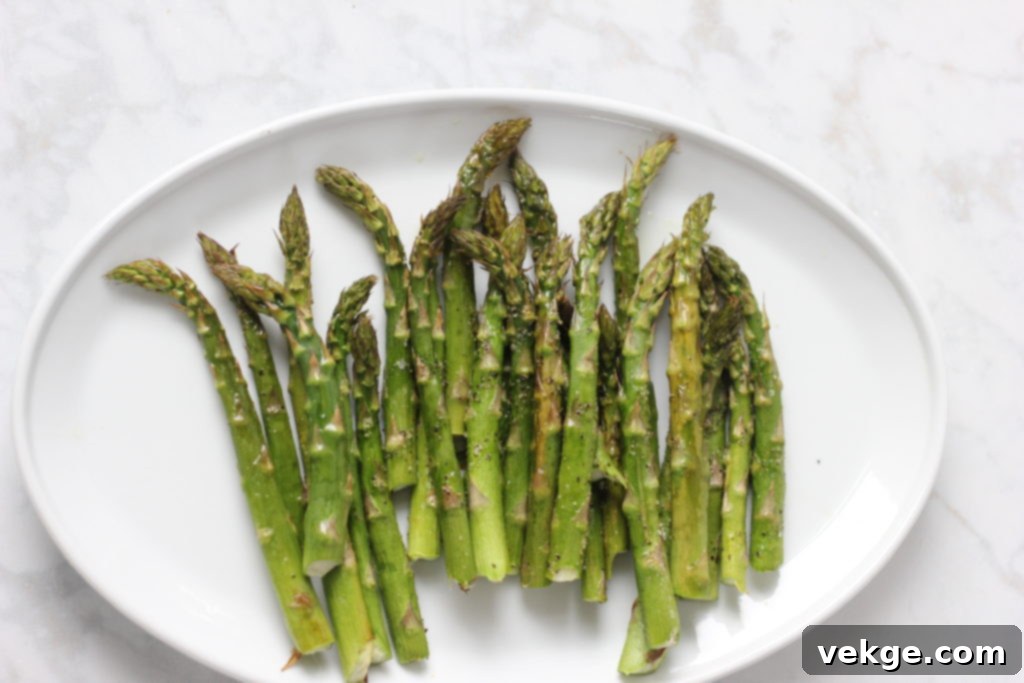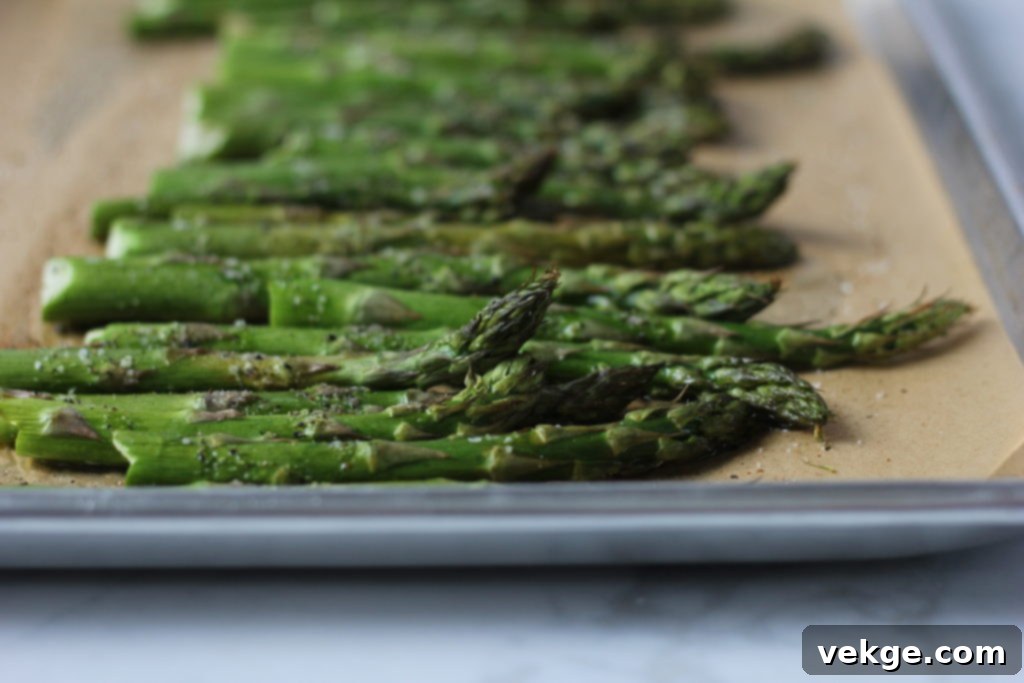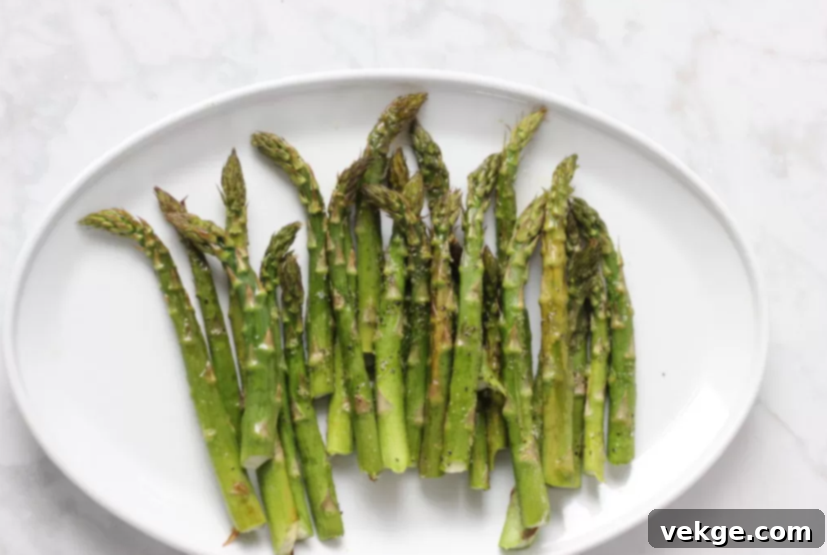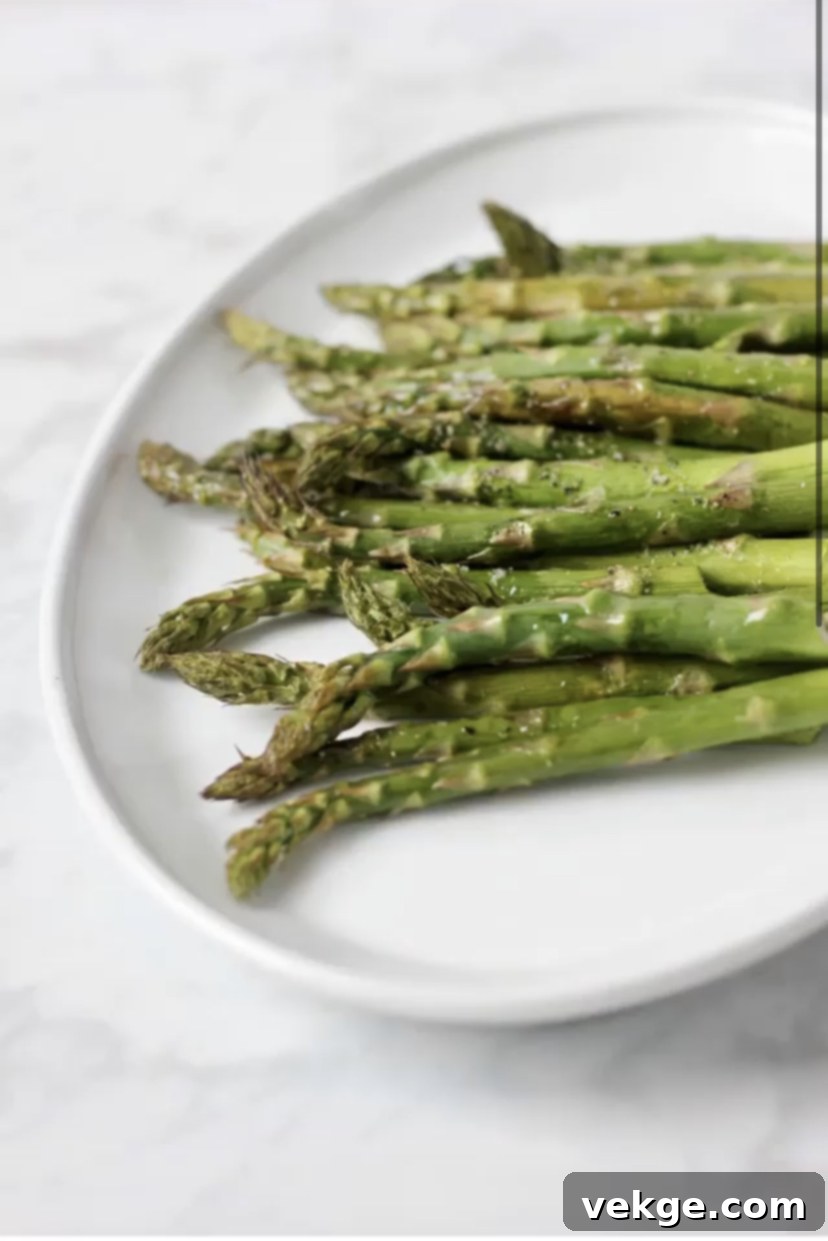Basic But Perfect Asparagus: Your Go-To Guide for Flawlessly Roasted Spears
Asparagus, with its vibrant green hue and distinct flavor, is a beloved spring vegetable that graces many dinner tables. Yet, for all its popularity, cooking asparagus perfectly can feel like a culinary challenge. Many home cooks find themselves in a constant cycle of trial and error, often ending up with spears that are either too soggy, too stringy, or simply lacking that ideal tenderness. But what if there was a simple, foolproof method to ensure your asparagus turns out perfectly crisp-tender every single time?
You’re in luck! This comprehensive guide and recipe are designed to eliminate the guesswork, transforming your asparagus from a “hit-or-miss” affair into a consistently delicious triumph. We’ll dive into everything from selecting the freshest spears to mastering the roasting technique, ensuring your asparagus is always the star of the plate – basic, yet absolutely perfect.

Why Asparagus Deserves a Spot on Your Plate
Beyond its delightful taste, asparagus is a nutritional powerhouse. This low-calorie vegetable is packed with vitamins A, C, E, and K, as well as folate, potassium, and dietary fiber. It’s also known for its antioxidant properties, which help combat free radicals in the body. Incorporating asparagus into your diet can support digestive health, boost immunity, and even contribute to bone health.
Its versatility in the kitchen is another major appeal. Asparagus can be steamed, boiled, grilled, pan-fried, or roasted. However, roasting often yields the most satisfying results, bringing out its natural sweetness and providing a pleasing texture that is both tender and slightly caramelized. It’s an ideal side dish for nearly any main course, from a simple weeknight chicken to an elegant holiday roast.
The Secret to Consistently Perfect Asparagus
Achieving that coveted “perfect” asparagus isn’t complicated; it relies on a few fundamental principles. The key lies in understanding how heat interacts with the vegetable and how to enhance its natural flavors. This recipe focuses on roasting, a method that provides even cooking and develops a beautiful depth of flavor. We’ll cover critical steps like proper trimming, just the right amount of oil, balanced seasoning, and the perfect temperature and duration in the oven.
Forget the fear of rubbery or limp asparagus. With these techniques, you’ll be able to prepare asparagus that’s vibrant, flavorful, and has that satisfying bite every single time.
Choosing the Best Asparagus at the Market
The journey to perfect asparagus begins even before you step into the kitchen. Selecting fresh, high-quality spears is paramount. Look for stalks that are firm, bright green, and have tightly closed, compact tips. Avoid any bundles with limp or wilted stalks, or those with flowering or opened tips, as these indicate older asparagus that might be tough or stringy. Both thin and thick spears can be delicious; consistency in thickness within your chosen bundle is more important for even cooking.
Preparing Asparagus: Trimming and Washing
Once you have your fresh asparagus, proper preparation is key. Begin by washing the spears thoroughly under cool running water to remove any dirt or grit. The most common question is how to trim the woody ends. The simplest and most effective method is to gently bend each asparagus spear. It will naturally snap off at the point where the tough, fibrous end meets the tender part of the stalk. This method ensures you’re only left with the delicious, edible portion. Discard the snapped-off ends.
After trimming, pat the asparagus dry with a clean kitchen towel or paper towels. Excess moisture can lead to steaming instead of roasting, preventing that desirable crisp-tender texture.

Basic But Perfect Asparagus Recipe

Basic But Perfect Asparagus
Perfect asparagus doesn’t need to be complicated. This recipe is a simple way to get perfectly roasted asparagus every time.
Course: Side Dish
Prep Time: 5 minutes
Cook Time: 15 minutes
Total Time: 20 minutes
Servings: 4
Ingredients
- 1 bundle asparagus
- 1 Tablespoon avocado oil (or olive oil)
- 1 teaspoon salt and pepper (or to taste)
- 2 teaspoons fresh lemon juice (optional, for brightness)
Instructions
- Gently bend each asparagus spear and let the end snap off at its natural breaking point. This removes the tough, woody base.
- Lay the trimmed asparagus spears out evenly in a single layer on a baking sheet. Avoid overcrowding the pan to ensure even roasting.
- Drizzle generously with avocado oil. While avocado oil is excellent for high-heat cooking and provides a neutral flavor, feel free to use your preferred oil, such as olive oil.
- Sprinkle the asparagus with salt and freshly ground black pepper. This is your base seasoning. For an extra layer of flavor, consider adding a dash of garlic powder or your favorite blend. Many enjoy the robust flavor of garlic pepper for this dish.
- Bake in a preheated oven at 350°F (175°C) for 15 minutes. The cooking time may vary slightly depending on the thickness of your asparagus spears and your oven. The goal is crisp-tender, not mushy.
- Carefully remove the baking sheet from the oven. If desired, give the roasted asparagus a squeeze of fresh lemon juice immediately before serving. The lemon juice brightens the flavors and adds a zesty finish. Serve hot and enjoy!
Essential Tips for Roasting Asparagus
While the recipe above provides a solid foundation, a few extra tips can elevate your roasted asparagus from great to truly exceptional:
- Don’t Overcrowd the Pan: For crispy asparagus, ensure the spears are in a single layer on the baking sheet without touching too much. Overcrowding leads to steaming, not roasting, resulting in soggy spears. If you have a large bundle, use two baking sheets.
- Even Thickness: Try to select asparagus bundles where the spears are of relatively similar thickness. This helps them cook at the same rate, preventing some from being undercooked while others are overcooked.
- Right Amount of Oil: Use just enough oil to coat the spears lightly. Too much oil can make them greasy, while too little can lead to dry or burnt spots. The oil helps conduct heat and creates a lovely caramelized exterior.
- High Heat, Short Time: Roasting at a moderate to high temperature for a relatively short period is key to achieving that perfect crisp-tender texture. Avoid low temperatures or long cooking times, which can make the asparagus stringy or mushy.
- Flip Halfway (Optional): For extra even browning, you can gently toss or flip the asparagus halfway through the baking time.
Flavor Variations and Enhancements
This “basic but perfect” recipe is incredibly versatile. Once you master the fundamental technique, feel free to experiment with different seasonings and additions to suit your palate:
- Herbs: Fresh or dried herbs like thyme, rosemary, dill, oregano, or a mix of Italian herbs can add wonderful aromatic notes. Add them along with salt and pepper.
- Garlic: Mince a couple of cloves of garlic and toss them with the asparagus and oil before roasting for a fragrant garlic-infused flavor. Be careful not to burn the garlic.
- Cheese: A sprinkle of grated Parmesan cheese during the last 5 minutes of roasting, or immediately after taking it out of the oven, adds a salty, umami kick.
- Lemon Zest: Instead of or in addition to lemon juice, a little lemon zest tossed in with the oil and seasonings can provide a brighter, more intense citrus flavor.
- Spicy Kick: A pinch of red pepper flakes will add a pleasant warmth and subtle heat to your asparagus.
- Balsamic Glaze: Drizzle a reduction of balsamic vinegar over the cooked asparagus for a sweet and tangy finish.
Serving Suggestions
Perfectly roasted asparagus makes an excellent accompaniment to a wide variety of meals:
- Proteins: It pairs beautifully with roasted chicken, baked salmon, pan-seared steak, or grilled pork chops.
- Breakfast/Brunch: Serve it alongside scrambled eggs, an omelet, or a frittata for a healthy and satisfying morning meal.
- Pasta Dishes: Toss chopped roasted asparagus into pasta with olive oil, garlic, and cherry tomatoes for a light and flavorful vegetarian dish.
- Salads: Cut the cooled roasted asparagus into smaller pieces and add them to green salads for extra texture and flavor.
- Appetizer: Serve chilled roasted asparagus with a dipping sauce or wrapped in prosciutto for an elegant appetizer.
Storage and Reheating
To keep fresh asparagus at its best before cooking, trim the woody ends and stand the spears upright in a jar with about an inch of water, similar to a bouquet of flowers. Cover the tops loosely with a plastic bag and refrigerate for up to 3-5 days.
Leftover cooked asparagus can be stored in an airtight container in the refrigerator for 2-3 days. To reheat, gently warm in a skillet over medium heat or in the oven at 300°F (150°C) until just heated through. Be careful not to overcook, as it can quickly become mushy.
Common Asparagus Cooking Mistakes to Avoid
To ensure your asparagus is always flawless, steer clear of these common pitfalls:
- Overcooking: This is the most common mistake. Overcooked asparagus becomes limp, mushy, and loses its vibrant color. Keep an eye on it!
- Undercooking: While less common in roasting, undercooked asparagus can be tough and fibrous. It should have a slight bite but yield easily.
- Insufficient Seasoning: Asparagus needs a good amount of salt and pepper to truly shine. Don’t be shy!
- Using a Cold Pan: Place asparagus on a preheated baking sheet for better crisping, or at least ensure the oven is fully preheated before putting the pan in.
- Not Drying Asparagus: Wet asparagus will steam rather than roast, preventing crispy edges.
